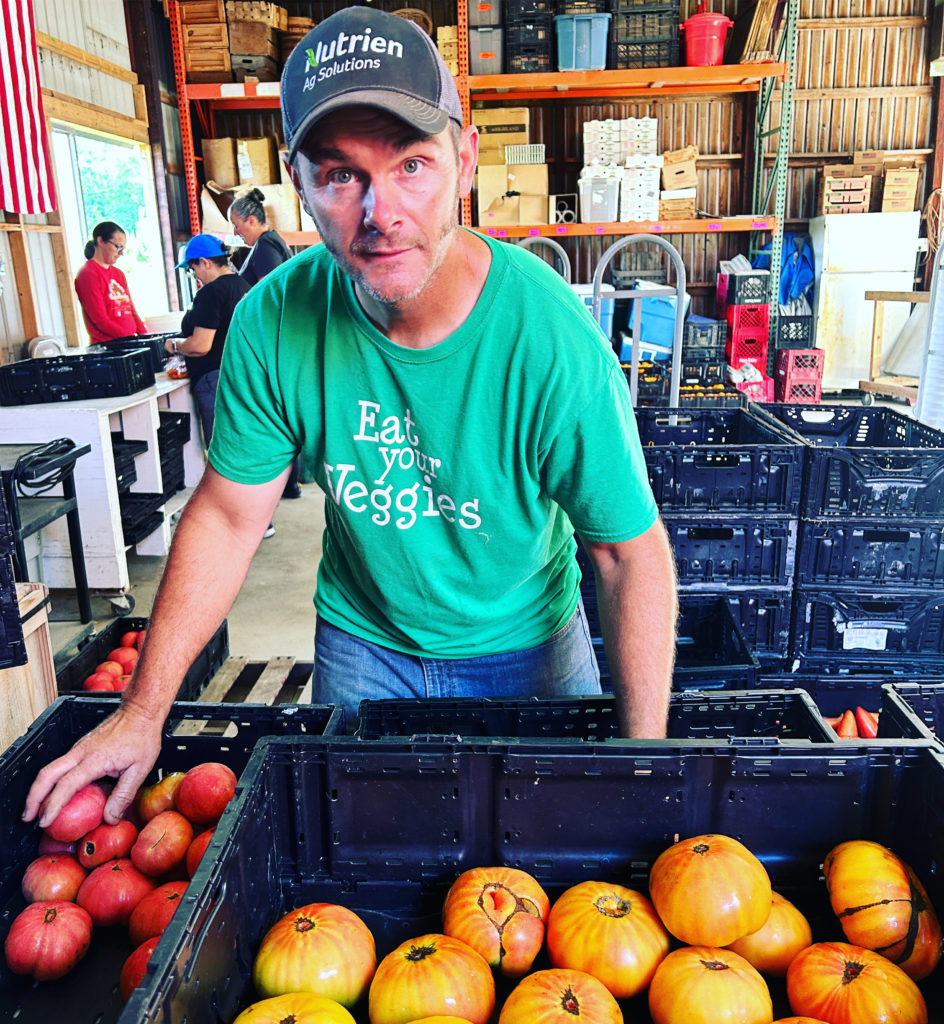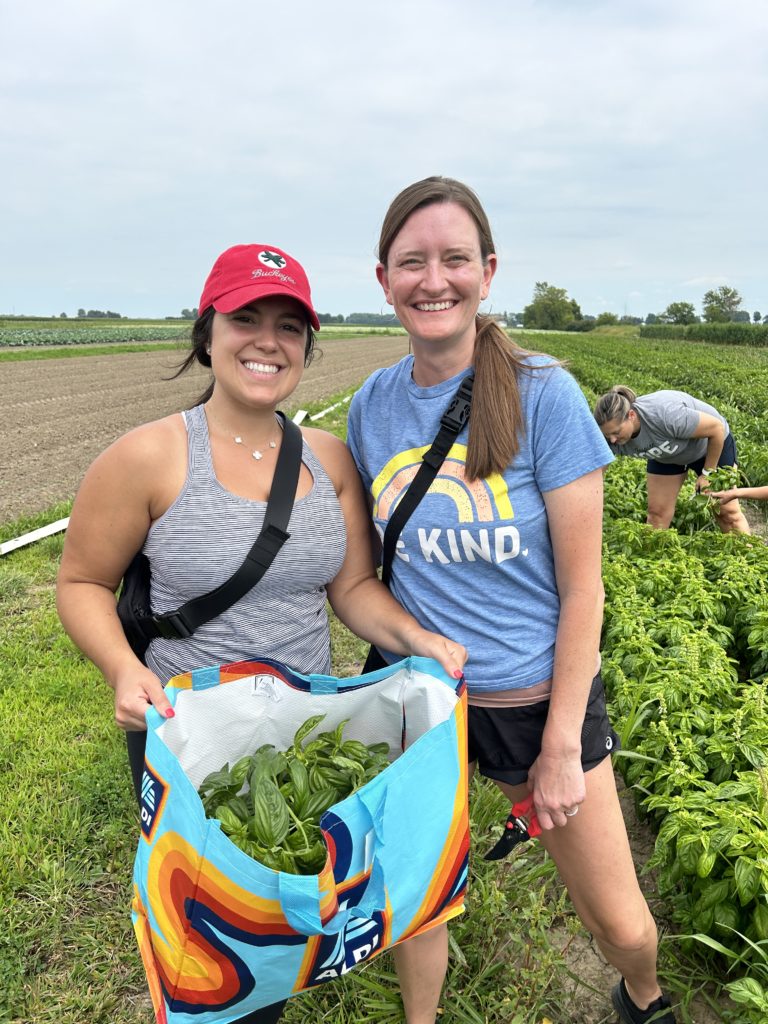How Does A CSA Work? (Understanding Community Supported Agriculture)
In recent years, there has been a growing interest in supporting local agriculture and accessing fresh, seasonal produce directly from farms. One popular way to do this is through Community Supported Agriculture (CSA) programs. But how exactly does a CSA work? Let’s delve into the workings of this innovative farming model and explore its various types and benefits.
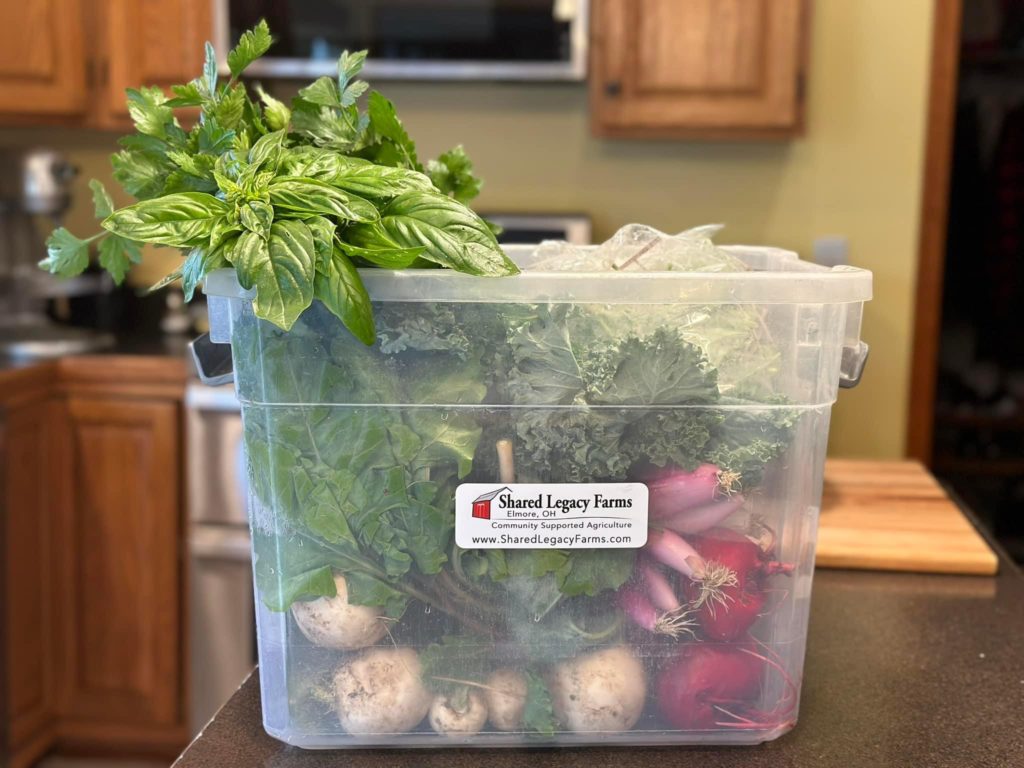
CSA vegetable shares come packed in a box
What is CSA?
CSA, short for Community Supported Agriculture, is a is a farming model built on fairness and transparency for both the farmer and the consumer. Traditionally, a consumer buys a share of a farm up-front, which provides financial security to the farmer for that season. In return, the consumer receives a regular box of fresh produce for the growing season. (The exact time can vary by farm). This direct relationship between consumers and farmers fosters community engagement, supports local agriculture, and promotes sustainable farming practices.
The US shift to industrialized farming systems in the 1950’s brought with it many benefits such as increased efficiency, safety, and prosperity for large farms. But there was a dark side that affected many small to medium-sized farms. These local mom-and-pop farm businesses couldn’t compete with the productivity and low market prices industrialized farms offered, and as a result were driven out of business.
In many cases, farms in the US are family-owned. When they disappear, the generational knowledge dies with it. CSAs are one way to restore freedom to smaller farms and protect their long-term sustainability. By receiving a “pledge” of financial support before the season begins from their farm’s CSA patrons, they can rest easy knowing that the costs are covered — rain or shine. As a result, they’re often able to spend more funds improving the farm and its soil, whether that be investing in new cover crops for soil health, updating an aging irrigation system, building high tunnels to extend the season, hiring reliable, skilled labor, or buying new coolers or farm equipment to maximize harvest efficiency. Farmers also benefit from CSAs by marketing directly to their CSA members. Farmers don’t pay a middleman, meaning they keep more of the money in their pockets. And because their members pay before a season begins, farmers can avoid operating loans and tailor the product better to their specific clientele.
Types of CSA:
- Traditional CSA (Farmer’s Choice): In a traditional CSA model, the farmer selects the assortment of produce that goes into each share based on what is in season and abundant on the farm. Members receive a diverse selection of vegetables, fruits, herbs, and sometimes additional farm products like eggs or honey. This model offers members a chance to experience the variety and seasonality of local agriculture.
- Choice CSA (Customizable): A choice CSA provides members with the flexibility to customize their shares according to their preferences. Instead of receiving a pre-packed box, members have the option to select their desired items from a list of available produce each week. Members can choose items they enjoy or need, reducing the likelihood of food waste. However, in this model customers do not try as many new foods as in the traditional model.
- Market-Style CSA: Market-style CSA combines the convenience of pre-packing with the flexibility of choice. Members visit a designated market location where they can select their produce directly from the farm’s stand. While there are still limits on the amount or variety of items members can take, this model provides a more interactive and personalized experience.
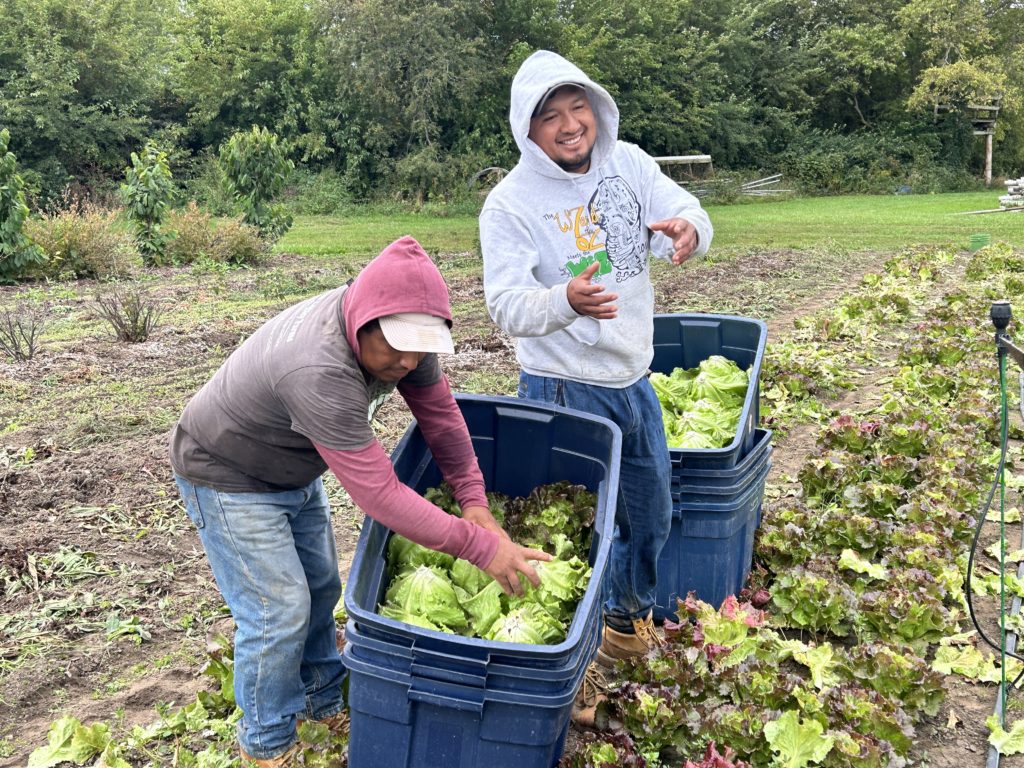
The crew harvests lettuce for last week’s box
Risks and Rewards:
Risks Shared by CSA Customers and Farms:
Joining a CSA involves sharing certain risks with the farm. Factors like adverse weather conditions, pest infestations, or crop failures can affect the quality and quantity of produce available to members each week. By committing to a CSA membership, customers acknowledge these inherent risks and support the farm even when it means their “share” volume may be affected due to some of these uncontrollable circumstances.
By committing to a CSA membership, customers demonstrate their resilience and solidarity with the farm’s endeavors, despite the uncertainty. Keeping the farmer afloat trumps getting their investment back in return. In doing so, CSA members not only gain access to fresh, locally grown produce but also play a vital role in sustaining the farm’s operations and promoting a resilient and thriving local food system.

CSAs teach the next generation where their food comes from
Rewards for CSA Customers:
Despite the risks, CSA memberships offer a plethora of rewards for customers. Here are a few:
Access to Fresh, High Quality, Seasonal Produce:
CSA members enjoy a regular supply of fresh, locally grown fruits and vegetables, often harvested at peak ripeness for maximum flavor and nutrition. CSAs are typically organic, which means they are fresher and grown with minimal-to-no undesirable pesticides, herbicides, and synthetic fertilizers. Customers learn how to eat with the seasons, as nature intended.
Personal Connection with Farmers:
Participating in a CSA provides members with the unique opportunity to develop a personal connection with the farmers who grow their food. By knowing their farmer personally, members gain insight into the farming practices, values, and dedication behind their food production. This direct relationship fosters transparency, trust, and accountability in the food system, allowing members to ask questions, provide feedback, and engage in meaningful conversations about agriculture and food. Additionally, knowing your farmer often leads to a deeper appreciation for the hard work and passion that goes into producing fresh, high-quality produce, further enhancing the overall CSA experience.
Supports a Local Farm Business:
By participating in a CSA, members directly support small-scale, sustainable farming practices in their community, contributing to the preservation of farmland and the local food economy. In many cases, a CSA costs less than the equivalent purchase from a grocery store, thanks to the direct relationship between the farmer and consumer. So, it’s a win-win: the farmer can make a livable wage and the consumer doesn’t have to absorb costs added by the middlemen.
Educational Opportunities & Creativity in the Kitchen:
Many CSA farms offer educational events, canning classes, farm dinners, farm tours, and newsletters to engage members in learning about agriculture, food production, and environmental stewardship. By getting exposed to different vegetables, customers are emboldened to try new foods and expand their palette. For foodies who love to cook, customers find delight in unboxing their CSA box each week and getting creative in the kitchen. CSA members who stick around for many years will likely change the way they eat and become a confident home chef for their family.
Teaching Children Healthy Food Habits for a Lifetime:
CSAs offer a valuable educational experience for children, teaching them about the importance of healthy eating and where their food comes from. By participating in CSA programs, children have the chance to visit the farm, interact with farmers, and learn about different fruits and vegetables grown locally. This hands-on learning opportunity encourages children to explore new foods, appreciate the diversity of fresh produce, and develop a connection to the land and farming practices. By incorporating CSA produce into family meals, children are exposed to a variety of nutritious foods, setting the foundation for lifelong healthy eating habits and a deeper understanding of the importance of supporting local agriculture.
Promotes a Healthy Lifestyle:
CSA memberships encourage members to incorporate more fresh fruits and vegetables into their diets, supporting overall health and well-being. By consuming locally grown produce that is harvested at peak ripeness, members gain access to nutrient-rich foods that can contribute to better digestion, increased energy levels, and reduce their risk of chronic diseases.

CSA member Cory Wolin shared this gorgeous photo of chilled corn soup with microgreens
Mitigates Environmental Damage:
CSA farms prioritize sustainable farming practices such as biodynamic and organic techniques, which reduce reliance on harmful chemicals like pesticides and herbicides. By avoiding monocropping and promoting biodiversity, CSA farms help maintain soil quality and prevent the degradation caused by industrial farming methods. This stewardship of the land fosters an ecological balance, minimizing the negative impacts of agriculture on the environment. CSA subscriptions contribute to a reduction in greenhouse gas emissions and waste by minimizing the need for excess refrigeration, transportation, and packaging. With produce harvested locally and distributed directly to members, the carbon footprint associated with long-distance transportation is significantly reduced. Additionally, CSA members often receive their produce in reusable or minimal packaging, further minimizing waste and environmental impact. This demonstrates how simple solutions, like participating in a CSA, can play a significant role in addressing complex issues such as climate change.
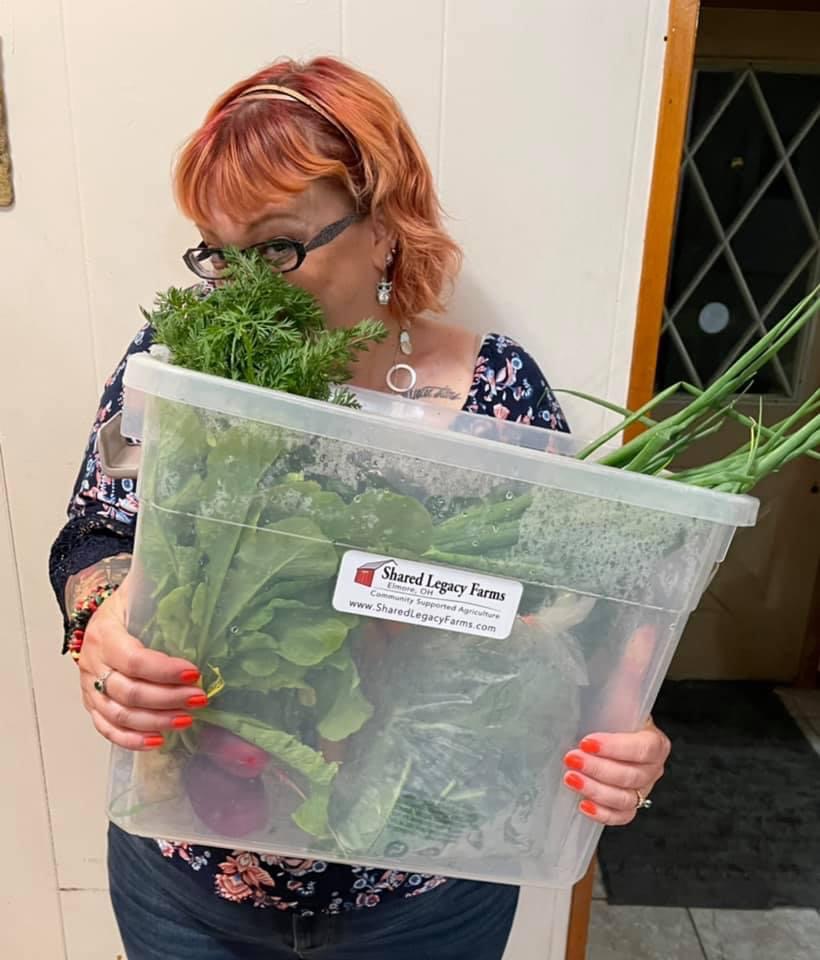
How to Join a CSA
No matter where you live, it’s possible to join a CSA. What’s more, many offer a diverse range of pricing options, like buying a half-share or paying what you can based on a sliding scale of income. Often consumers will need to pay for the entire CSA season upfront. Remember, this is one of the benefits for the farmer — to have cash flow up front at the beginning of the season and avoid taking out risky operating loans. If a CSA feels out of your price range or it’s simply too much food for you, then try going in on the season with friends, neighbors, or family. Or try just shopping from the online store week to week (if the farm allows for that). Sites like Local Harvest act as a comprehensive directory so you can find a CSA or farmers’ market near you.
Shared Legacy Farms CSA is a 40 acre certified organic vegetable farm owned and operated by Kurt and Corinna Bench in Elmore, Ohio, just outside Toledo. It is an 18-week membership serving 385 member families. The season runs mid-June through mid-October, and it is a traditional-style CSA. To learn more about how their CSA works and to enroll, visit this page on their website to learn more.
In conclusion, Community Supported Agriculture (CSA) offers a unique and rewarding way for individuals and families to access fresh, locally grown produce while supporting sustainable farming practices. Whether through a traditional CSA, choice CSA, or market-style CSA, members can enjoy the benefits of seasonal eating, community involvement, and a closer connection to the source of their food. Joining a CSA is not just a transaction; it’s a commitment to fostering a healthier, more resilient food system for generations to come.
Is CSA the Right Fit for You?
Download our Guide "6 Questions You Should Ask Before You Join a CSA" to help you figure out if you're a good fit for our veggie box membership.
Success! Now check your email to confirm your subscription and read those 6 questions.... Let's see if you're a good fit for our CSA! Can't find the email? Go check your spam folder! Your farmer, Corinna

